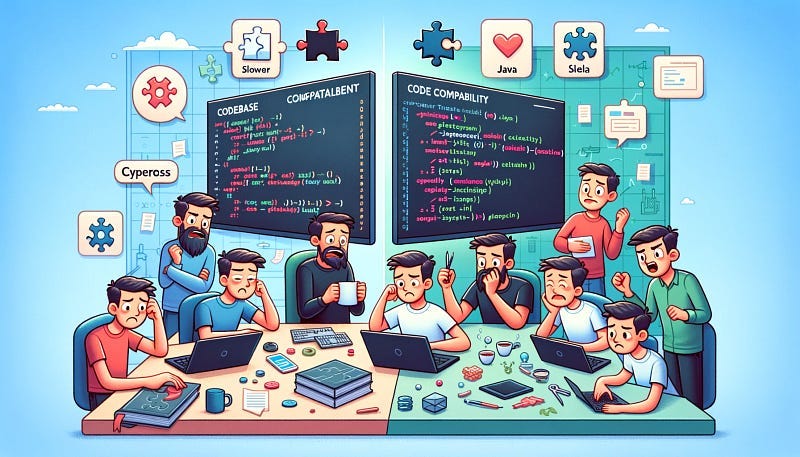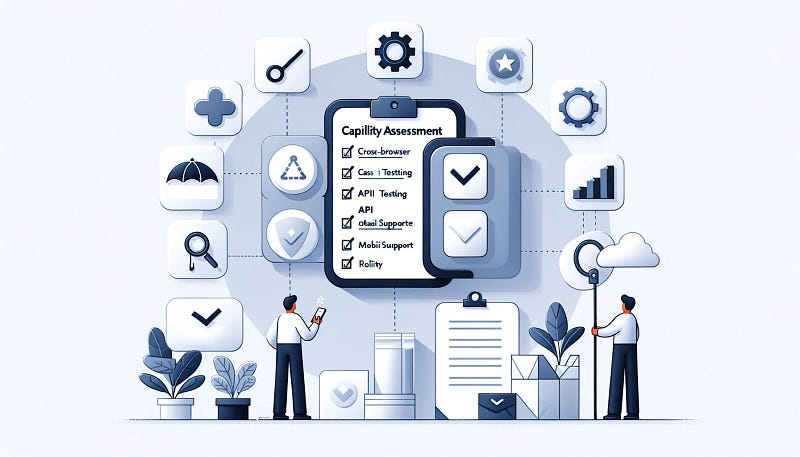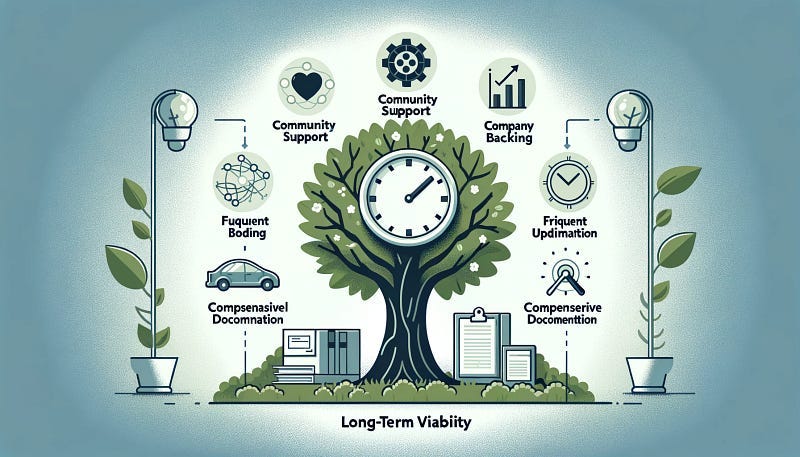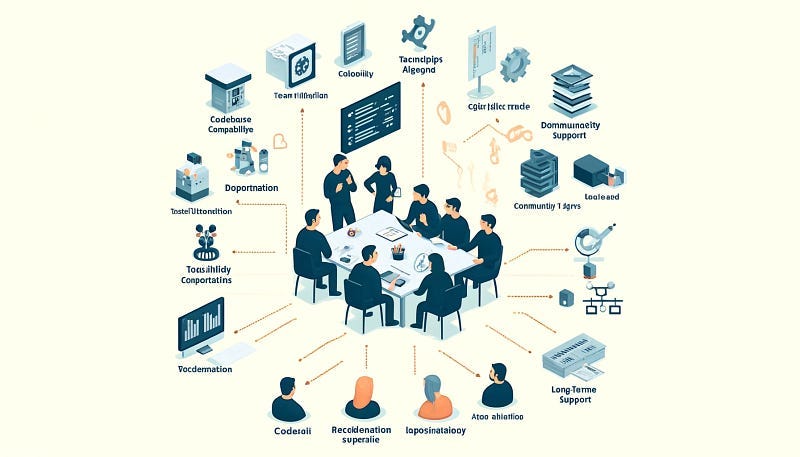Test automation is buzzing with frameworks like Playwright and Cypress, but popularity alone shouldn’t dictate your choice. Instead, consider aligning with your existing codebase and the skills of your development and QA team. In this article, we’ll explore this approach in depth, challenging conventional wisdom and offering insights to help you make an informed decision.
Codebase Compatibility
Picture this scenario: your application is built with Java, but your team decides to use a JavaScript-based testing framework like Cypress. Suddenly, developers and QA engineers find themselves grappling with unfamiliar syntax and concepts, leading to:
Slower test development
Reduced collaboration
Mounting frustration
Now, imagine choosing a framework that allows you to work in the same language as your application. Selenium, with its strong Java support, could be the perfect fit. You’ll experience:
Seamless integration
Improved code reuse
Shorter learning curve
Aligning your test automation framework with your codebase is like finding the missing piece of a puzzle — it just fits. — Ryan Craven
Question: How can aligning your test automation framework with your codebase improve developer productivity and collaboration?
Action Item: Analyze your application’s codebase and consider frameworks that align with its primary programming language.
Team Skills Alignment
Learning a new framework from scratch can be a daunting task, especially if your QA team has been working with a specific tool for years. Switching to a new framework like Playwright might not be the most efficient choice, as the learning curve can impact:
Test development speed
Overall productivity
On the other hand, if your team is already proficient in the languages and tools a framework uses, adopting it becomes a breeze. Imagine your developers and QA engineers:
Collaborating seamlessly
Speaking the same language
Delivering tests at lightning speed
Think About This: Is sacrificing team productivity for the sake of following a trend a wise decision?
Capability Assessment
When evaluating test automation frameworks, it’s easy to get caught up in a whirlwind of features and comparisons. Cross-browser testing, API testing, mobile support — the list goes on. However, it’s crucial to take a step back and assess your project’s specific testing requirements.
Start by:
Identifying the types of tests you need to automate
Prioritizing the must-have capabilities for your project
Evaluating frameworks based on those specific requirements
This targeted approach ensures that you select a framework that meets your project’s unique needs without over-complicating the process.
Choosing a test automation framework that aligns with your project’s requirements is like finding the right tool for the job — it makes all the difference. —Ryan Craven
Question: How can you ensure that the chosen framework meets your project’s unique testing needs without over-complicating the process?
Action Item: Create a checklist of your project’s essential testing requirements and use it as a guide when evaluating frameworks.
Long-Term Viability
When choosing a test automation framework, it’s tempting to focus solely on the present and overlook the future. However, considering the long-term prospects of a framework is crucial for the success and sustainability of your testing efforts.
Assess the framework’s:
Community support and engagement
Backing by a stable company
Frequency and quality of updates and improvements
Availability of comprehensive documentation
Analyze the framework’s track record and adoption trends to gauge its long-term viability.
Think About This: How can you balance the need for staying current with the stability and longevity of a framework?
Collaborative Decision-Making
Choosing the right test automation framework should not be a unilateral decision. Involve your development and QA team in the selection process to ensure buy-in and a smooth transition. Schedule a collaborative meeting to:
Discuss the key factors in framework selection, such as codebase compatibility, team skills alignment, capability assessment, and long-term viability
Gather their insights and preferences
Synthesize the feedback and identify common themes and priorities
Create a shortlist of frameworks that align with the team’s input and the project’s requirements
Conduct a more in-depth evaluation of the shortlisted frameworks, considering factors such as documentation, community support, and ease of integration with your existing tools and processes
Make a final decision based on the collective feedback and evaluation results, ensuring alignment with your project’s goals
By fostering a collaborative approach, you can:
Leverage the collective knowledge and experience of your team
Ensure that the chosen framework aligns with the team’s skills and preferences
Increase team members’ sense of ownership and commitment to the new framework
Identify potential challenges and opportunities early in the process
Make a well-informed decision that benefits the entire team and the project
Question: How can you involve your development and QA team in the framework selection process to ensure buy-in and a smooth transition?
Action Item: Schedule a collaborative meeting with your development and QA team to discuss the factors outlined in this article and gather their insights and preferences.
Choosing the right test automation framework goes beyond following trends or yielding to popular opinion. It’s about aligning with your project’s unique needs, leveraging your team’s skills, and considering the long-term implications.
Remember, the best test automation framework is the one that empowers your team to deliver exceptional results while seamlessly integrating with your existing ecosystem. By aligning with your codebase, considering your team’s skills, prioritizing capabilities, and evaluating long-term viability, you can make an informed decision that sets your testing efforts up for success.
So, the next time you find yourself in the midst of a heated debate about the “best” test automation framework, take a step back and consider what truly matters for your project. Challenge conventional wisdom and make a choice that empowers your team to deliver outstanding results.










